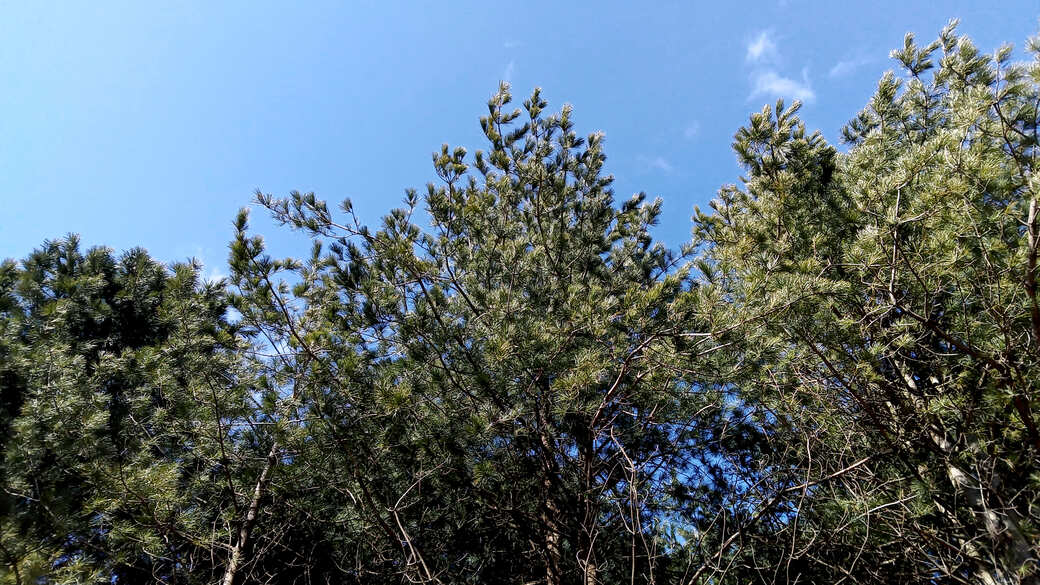Native Pine Tree Species

What are the native pine tree species found in Washington State?
- Western White Pine (Pinus monticola)
- Habitat: Moist, rich soils at elevations from sea level to 7,000 feet.
- Growth Pattern: Long and slender cones up to 15 inches long; blue-green needles in clusters of five, up to four inches long.
- Ecological Role: Provides habitat for various wildlife.
-
Measurements: Up to 160 feet tall, pale brown, soft, finely grained wood.
-
Whitebark Pine (Pinus albicaulis)
- Habitat: High elevations.
- Growth Pattern: Needles in clusters of five; cones range from 2.5 to 4.5 inches long.
- Ecological Role: Keystone species, regulates runoff, controls soil erosion, and provides food for birds and mammals.
-
Measurements: Up to 90 feet tall, shrub-like appearance, wind-impacted shape.
-
Ponderosa Pine (Pinus ponderosa)
- Habitat: Dry soils, often in large gardens and parks.
- Growth Pattern: Dark yellow-green needles in clusters up to 11 inches long; cones up to 6 inches long.
- Ecological Role: Supports local ecosystems.
-
Measurements: Up to 200 feet tall, soft, fine-grained dark brown to reddish-brown wood.
-
Lodgepole Pine (Pinus contorta)
- Habitat: Mountain and coastal regions.
- Growth Pattern: Needles in clusters up to 3 inches long; cones small, hard, and prickled.
- Ecological Role: Supports local ecosystems.
- Measurements: Up to 50 feet tall, adapted to poor and rocky soils.
What are the key characteristics of the Ponderosa Pine (Pinus ponderosa)?
- Physical Description: Soft, fine-grained dark brown to reddish-brown wood; dark yellow-green needles in clusters up to 11 inches long; cones up to 6 inches long.
- Growth Conditions: Prefers dry soils, often found in large gardens and parks.
- Typical Lifespan: Long-lived, with some trees reaching over 500 years.
- Notable Uses or Cultural Significance: Highly valued for its wood, used in construction and furniture-making.
- Quantitative Data: Average age at maturity: 100-200 years; typical range of height: 100-200 feet; typical range of width: 30-60 feet.
Non-Native Pine Tree Species

What are the non-native pine tree species found in Washington State?
- Pinus Flexilis “Cesarini Blue”
- Origin: Introduced for landscaping.
- Growth Habits: Asymmetrical appearance, requires full sun, and regular pruning to maintain a small, dense shape.
- Visual Characteristics: Soft blue-green needles.
- Maintenance Requirements: Regular pruning.
- Ecological Impact: None significant.
-
Quantitative Data: Up to 14 feet tall, 7 foot spread.
-
Vanderwolf Pine
- Origin: Introduced for landscaping.
- Growth Habits: Pyramid-shaped, soft blue-green needles, tolerates partial shade.
- Visual Characteristics: Soft blue-green needles.
- Maintenance Requirements: Minimal.
- Ecological Impact: None significant.
- Quantitative Data: Up to 30 feet tall, 15 foot spread.
References
-
The Pine Trees of Washington State – Big Trees Supply. (2013, May 26). Retrieved from https://bigtreesupply.com/the-pine-trees-of-washington-state/
-
Pacific Northwest Native Plant Profile: Pine (Pinus species) – Real Gardens Grow Natives. (2022, March 15). Retrieved from https://realgardensgrownatives.com/?p=5420
-
Identifying Old Trees and Forests – Washington State Department of Natural Resources. (2008, September). Retrieved from https://www.dnr.wa.gov/publications/lm_hcp_eastside_oldgrowth_guide.pdf.
The pine trees of Washington State are a diverse and important part of the state’s natural landscape. From the towering Ponderosa Pine to the high-elevation Whitebark Pine, these trees play crucial roles in local ecosystems and provide valuable resources for both wildlife and human communities.
